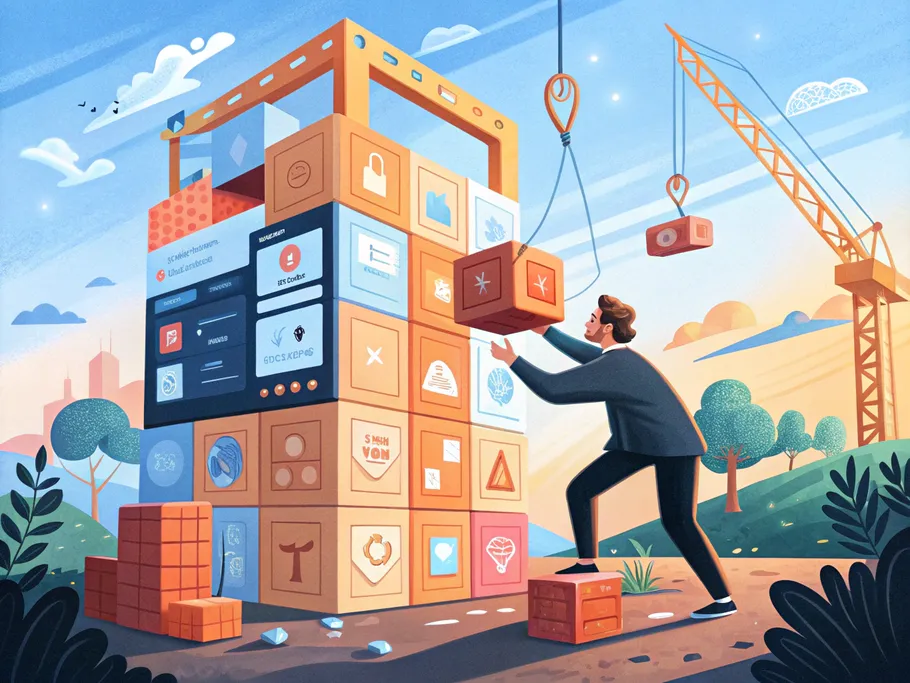Yeah, yeah, every business needs website content.
We all heard that a thousand times.
“Your website is your business card! It’s your most scalable salesperson!”
It feels like all these people are just blurting out these cliches to avoid actually explaining how to make your website content… doesn’t it?
So in this article, I want to show you exactly HOW to go about making one, and what you really need to include if you want to make sales.
(Newsflash: lots of websites never do…)

First of all, don’t include tons of technical language that only you speak.
And most founders get stuck here, but not because they’re not smart…
It’s because they’re too close to the product.
You want to talk about ALL your features, how exactly everything works, your why, etc.
But more often than not, you’ll just write website content that confuses the reader.
Pro tip that works: Imagine someone asked you what your business does while you’re both in an elevator.
That version should be your homepage.
(Hence the name ‘elevator pitch’!)
All I’m trying to say is – no need to get super fancy.
Being clear is WAY more important. Who do you help and how? Make that crystal clear, okay?
Most website content doesn’t work because it’s written backwards.
It’s built around what the business wants to say, not what the customer needs to hear.
That’s why you see homepages filled with vague mission statements, buzzwords, and empty claims like “We are a leading provider of…”
(Leading what? Says who? 😂).
If your website opens with a line that could sit on any competitor’s site, it’s already losing.
Well…
I just want to take a moment to give you my free 8D Framework To Launch Your Business eBook.
Sue me.
It’s a step-by-step guide designed to show you how to build a product or service, launch it, and keep scaling as long as you want to.
If you’re an entrepreneur in ANY industry… you’ll find it really useful (plus it’s free!):
You have 8 seconds. That’s all.
That’s how long the average visitor gives you before deciding if your site is worth their time.
The average visitor is ruthless, I know.
So whatever message sits at the top of your page, make sure it answers this question:
“Why should I care?”
This is where most businesses f*ck up. They start by talking about themselves too much.
Wrong move.
It might sound sad, but no one cares who you are. Everybody (subconsciously) only cares about themselves.
Start by naming a real problem your customer is facing – or a goal they’re desperate to reach.
If you nail that opening line, they’ll keep reading. If you don’t, they’re gone.
(You can still introduce yourself, but make sure the reader can identify themselves with you.)

Here’s a structure that works across almost every type of website content – from homepages to product pages to blog posts:
See? It’s not so hard when you break it down.
Every piece of website content should clearly answer the following five questions.
Miss one, and the sale might slip through your fingers.
If your homepage or landing page doesn’t tick off all five, it’s time to rewrite (or hire someone to do it for you).
Here’s a direct response trick: read your copy out loud.
This one is amazing. Even Ogilvy did it, trust me.
If it sounds like something you’d actually say in a conversation, you’re good.
If it sounds like it belongs in a corporate annual report, cut it.
Avoid marketing-speak. Kill phrases like:
Replace these phrases with actually helpful stuff, such as:
Saying you’re “trusted by clients worldwide” means absolutely nothing.
How about you SHOW those ‘worldwide clients’?
Showing a real screenshot of a client dashboard with 10,000 active users means everything.
Same goes for testimonials, before/after comparisons, charts, mini-case studies—anything that lets your reader see the benefit, not just read about it.
If you’re selling a transformation, prove it.
And if you have no proof yet, that’s okay. I’ve got you.
You can still show what OTHER people are achieving using your method. It’s not as effective as using your own case studies, but it’s a start.
A customer journey map is just a way of tracking how someone discovers you, builds trust, makes a decision, and becomes a buyer. Most visitors fall into one of these five stages:
Each stage needs a different kind of content.
In Awareness, your job is to show you understand the problem. Think blog posts, quick guides, or lead magnets. Don’t pitch—just connect.
In Consideration, they’re weighing options. Use comparison tables, testimonials, and clear explanations to show why you’re different.
In a decision, just focus on removing friction. It must be as easy as humanly possible to buy.
After they buy, Purchase, and Loyalty content helps them succeed and feel great about their decision. Think onboarding guides, help hubs, and follow-up emails that actually deliver value.
As soon as someone buys, they feel a lot of anxiety.
If you don’t immediately start bombarding them with content and value, their anxiety will just deepen.
In conclusion to this wonderful section…
Every page should move the reader one step forward. A blog post should guide them to a case study. A product page should nudge them toward the checkout.
You’ve probably heard this a hundred times: “Pick a short, catchy domain name.”
That’s… fine.
But it’s also surface-level advice. What no one tells you is this:
Your domain and your site structure shape how people find you, how much they trust you, and whether they stick around long enough to buy anything.
Let’s start with the domain.
Yes, shorter is better. Yes, it should be easy to spell. But a great domain also does some way more important things:
It sticks in someone’s head.
It sounds good when you say it out loud.
It hints at what you do (without boxing you in if your offer evolves).
Now… You don’t need to overthink this.
Use a tool like NameMesh or LeanDomainSearch to spark ideas.
Don’t sit on this for a month. The most important thing is to launch NOW… you can reiterate later.
And please—clean URLs. No random sh*t like /page-id=2839.
Keep it simple: /pricing, /about, /case-study-clientname.
This helps SEO. But more importantly, it helps ACTUAL HUMANS (which is also what Google tries to do with its SEO).
Here’s your quick checklist:

Outsourcing your website in 3… 2… 1…
First: Don’t hand off everything and vanish.
This isn’t a set-it-and-forget-it situation, like…
How the site is structured, what the user flow looks like, and how the website content will support the customer journey.
You’re the one who understands your business. No one else can fake that.
Second: Document everything.
When you work with an external team, assume they’ll be gone in six months. Poof. Bye-bye.
Get a shared Google Doc with logins, settings, plugins, and platform info.
Ask for walkthrough videos or Looms explaining how things were built.
Request a final “handover doc” before any contract ends.
If someone builds your entire site and you don’t know how to update a single thing – or worse, they ghost you – you’re now locked out of your own business.
Third: Don’t be a cheap ass.
Do NOT look for the cheapest Fiverr gig. I know it’s tempting, though.
You’re looking for someone who understands business goals, not just pixels and code.
Ask for real examples, not just a pretty portfolio.
Look for someone who asks questions about your goals, not just colors and fonts.
If they talk strategy in addition to delivery, that’s already a good sign.
If you can, spend at least $1k on a good website. If not, do what you gotta do.
Fourth: protect your IP!
Make sure you own everything.
(laughs in capitalist)
Your domain, your hosting account, your content files, your brand assets. If the person you hire controls all of that, you’re basically a tenant in your own house.
Also, set expectations in writing. Scope, deadlines, revision limits, what happens if someone disappears – get it all in writing.
Every blog EVER talks about the importance of making a website.
We’re not every blog.
Here, we only focused on the practical steps you need to take to create amazing (and high-converting) website content right now.
Little summary right here:
Middle of page: Explain the key benefits, back them up with proof, and answer common objections.

Email subscription is available ONLY TODAY (oh, okay, and tomorrow).
Surely, we respect your inbox! Unsubscription works every day.

We’d love to tailor your experience — which of these best describes you?